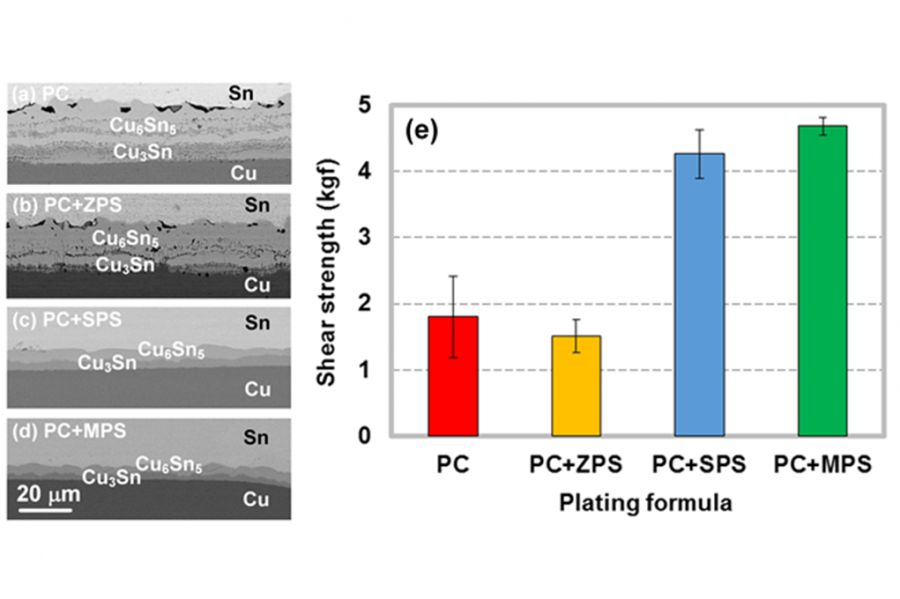| 論文篇名 | 英文:Impurity Effects in Electroplated-Copper Solder Joints 中文:電鍍銅銲點的雜質效應 |
| 期刊名稱 | METALS |
| 發表年份,卷數,起迄頁數 | 2018, 6, 388 |
| 作者 | Lee, Hsuan, Chen, Chih-Ming*(陳志銘) |
| DOI | 10.3390/met8060388 |
| 中文摘要 | 電鍍銅是一項成熟的技術,且已廣泛使用在微電子產業。隨著先進微電子封裝技術的發展,電鍍銅遭遇新的挑戰,包括在非平坦表面的原子沉積,以及在高深寬比的凹槽中鍍出高覆蓋與均勻的鍍層。有機添加劑的使用扮演重要的角色,包括調節原子的沉積達到成功的金屬批覆與填充,其中仰賴添加劑在鍍層表面的吸附性與交互作用。不過,有機添加劑吸附的特性不可避免會造成自身衍生的雜質在電鍍過程中,同時被包覆在銅鍍層中。當使用PEG與氯離子作為添加劑時容易造成高濃度的雜質包覆,並進一步影響銅鍍層及其銲點的微結構演化,導致孔洞大量生成在銲點界面。特定濃度的SPS添加後可以有效抑制雜質的摻雜與孔洞的生成。本文章將回顧相關文獻,並聚焦在添加劑配方與電鍍參數對電鍍銅層中雜質摻雜,以及對銲點界面孔洞生成的影響。 |
| 英文摘要 | Copper (Cu) electroplating is a mature technology, and has been extensively applied in microelectronic industry. With the development of advanced microelectronic packaging, Cu electroplating encounters new challenges for atomic deposition on a non-planar substrate and to deliver good throwing power and uniform deposit properties in a high-aspect-ratio trench. The use of organic additives plays an important role in modulating the atomic deposition to achieve successful metallic coverage and filling, which strongly relies on the adsorptive and chemical interactions among additives on the surface of growing film. However, the adsorptive characteristic of organic additives inevitably results in an incorporation of additive-derived impurities in the electroplated Cu film. The incorporation of high-level impurities originating from the use of polyethylene glycol (PEG) and chlorine ions significantly affects the microstructural evolution of the electroplated Cu film, and the electroplated-Cu solder joints, leading to the formation of undesired voids at the joint interface. However, the addition of bis(3-sulfopropyl) disulfide (SPS) with a critical concentration suppresses the impurity incorporation and the void formation. In this article, relevant studies were reviewed, and the focus was placed on the effects of additive formula and plating parameters on the impurity incorporation in the electroplated Cu film, and the void formation in the solder joints. |
Impurity Effects in Electroplated-Copper Solder Joints 2018-05-28

設施農業:節能栽培與滅菌【化學工程學系陳志銘教授】






